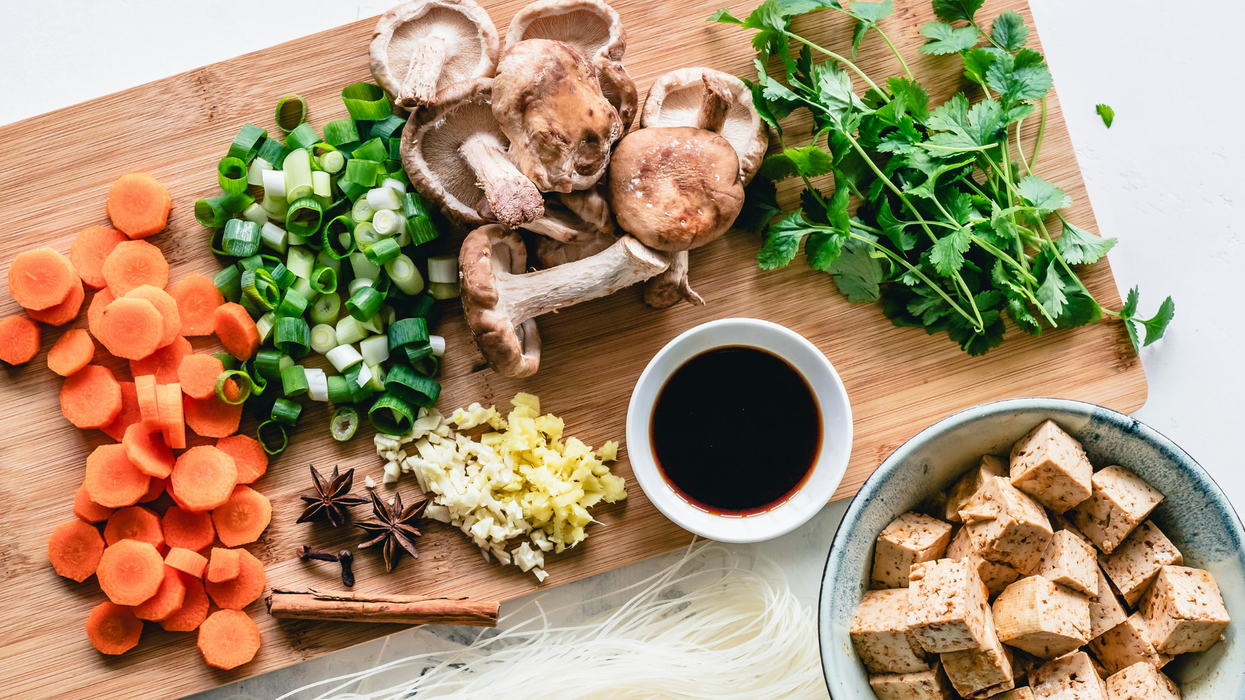"Comfort foods don't have to be junk. And healthy foods don't have to be boring."
Stress Eating? Reach for These 3 Types of Comfort Foods Instead
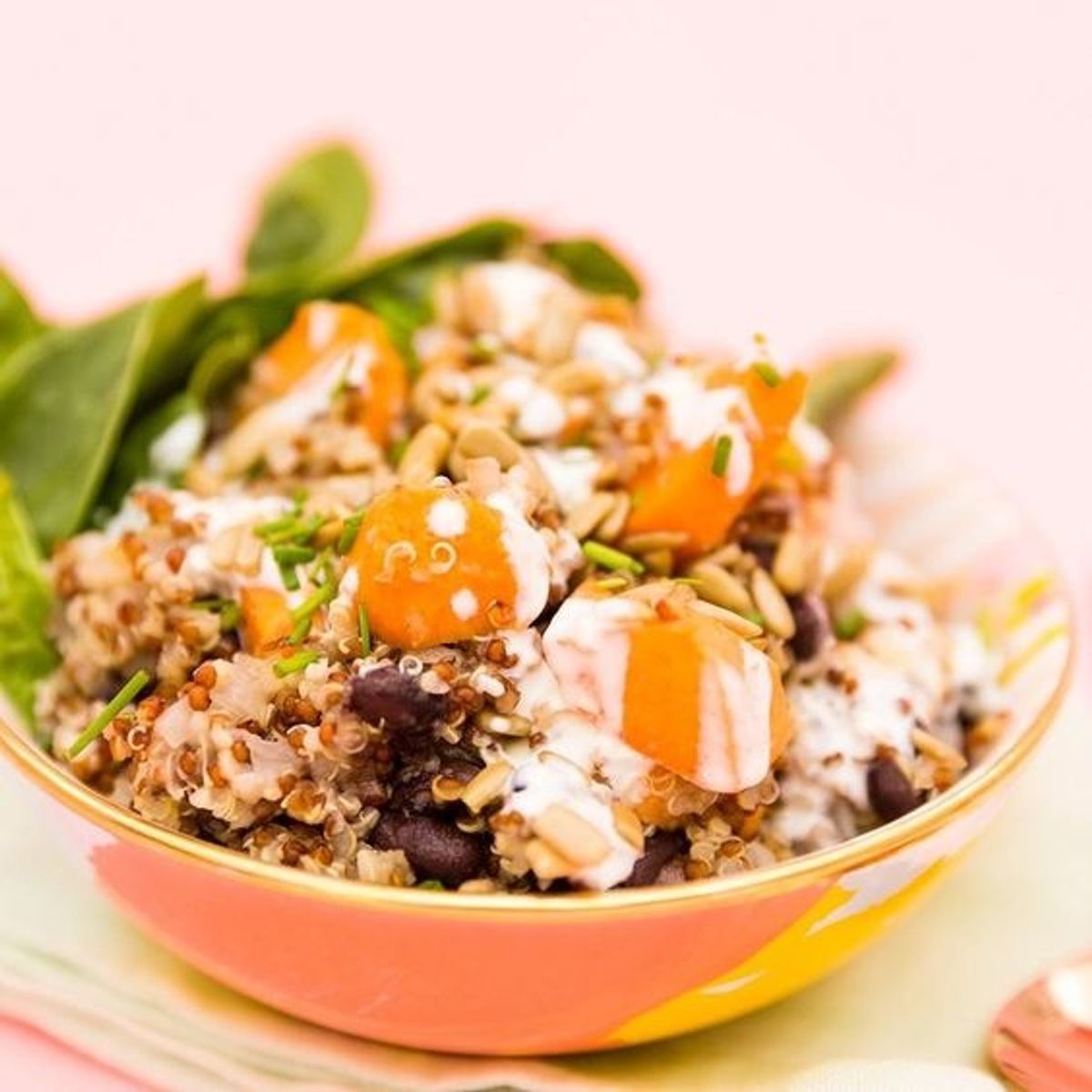
Theresa Gonzalez is a content creator based in San Francisco and the author of Sunday Sews. She's a lover of all things design and spends most of her days raising her daughter Matilda.
Stress eating has become a given these days with everything going on in the world and many of us working just a few steps away from our fridge. And the thing is, stress eating is often synonymous with unhealthy eating, right? But it doesn't have to be that way says Chef Gerard Viverito, director of Culinary Education for Passionfish, a NGO non-profit that educates people on the issue of seafood sustainability. "I've turned to food to bring me solace. In hindsight, I learned that when you eat poorly, you feel worse so you eat poorly again. After two slices of pie, you might as well eat the whole thing, right? It's a downward spiral!"
We get it/been there. Viverito notes that cleaning up your diet may help you feel better physically and emotionally. Makes sense. Here, he reveals his three favorite food groups that he reaches for whenever he's stressed. "Comfort foods don't have to be junk. And healthy foods don't have to be boring," he says. Truth!
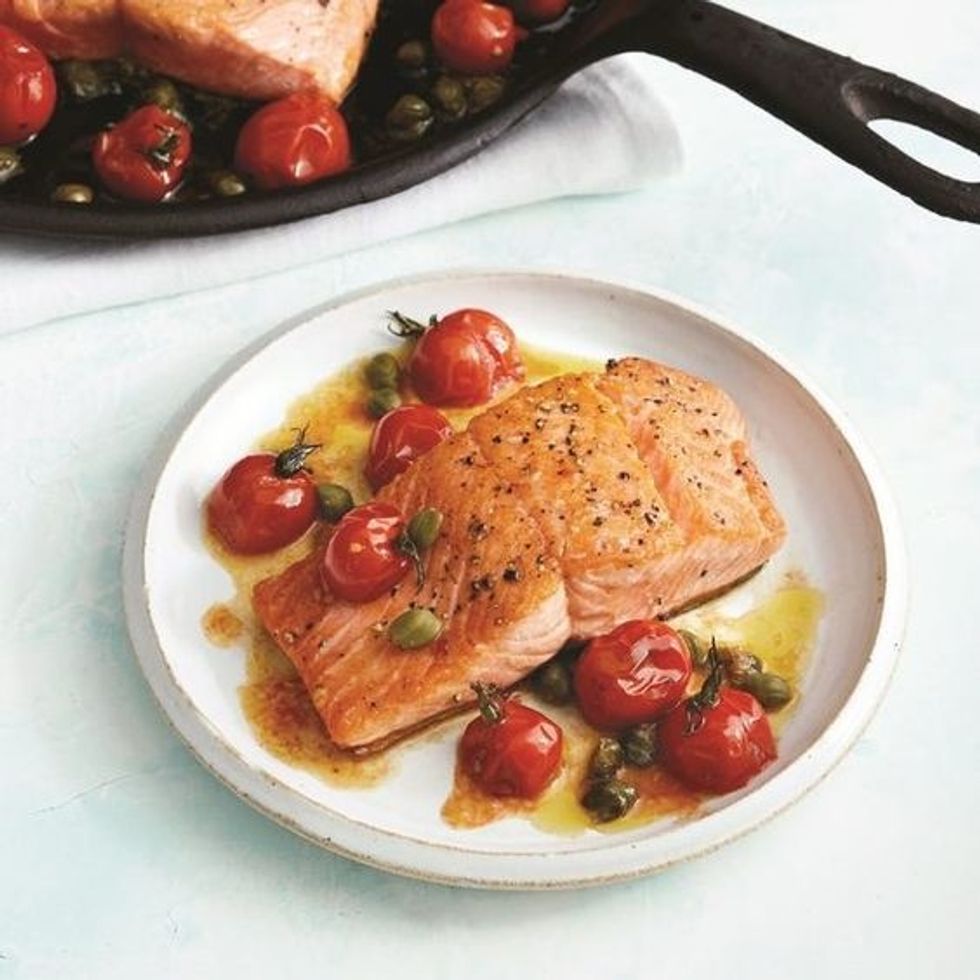
Food with fins. "Meat prices are skyrocketing and there's talk about shortages. Meanwhile, there's been a spike in seafood consumption. But I still hear from people who are afraid to serve fish at home because they don't know how to prepare it. Really, it's easy. Just saute it at high heat until it changes color and flakes easily. Total cooking time would be about 8-9 minutes for thick fillets, and 6-7 minutes for thinner filets."
- Make sure to use the right oil. "Some oils become carcinogenic at high heat. Malaysian palm oil is ideal for fish because it has a neutral, buttery flavor. Plus it's heart-healthy, nutritious and certified sustainable."
- Choose sustainable fish. "We're all attuned to shortages right now. Get into the habit of making responsible choices that help protect our food supplies and our planet. The American seafood industry generally has better sustainability practices than those of other countries." You can also download the Seafood Watch app for an easy way to know whether you're making the right choice.
Brown-Butter Salmon with Tomatoes and Capers
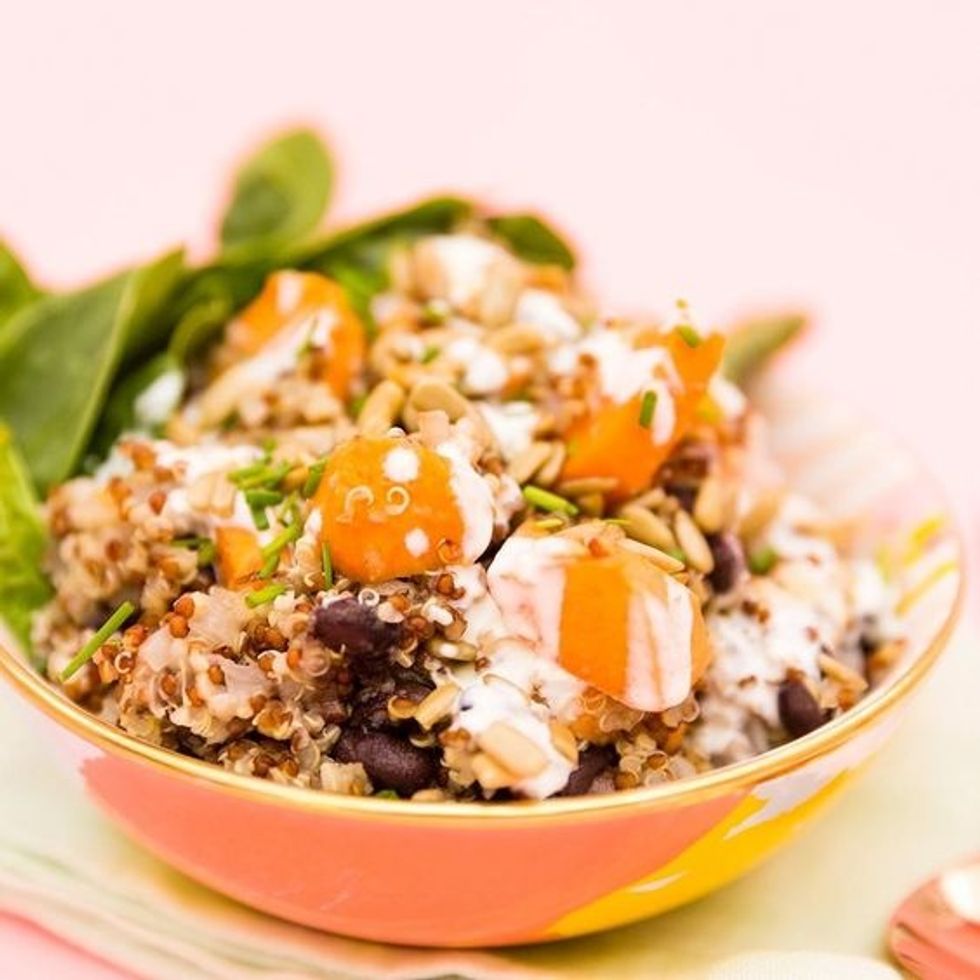
Food from the soil. "There's no shortage of fruits and vegetables right now. Because they are rich in fiber, you'll feel fuller so you're less likely to want to snack. Consider serving plant-based proteins a few times each week instead of animal proteins. You may know that beans and legumes have a lot of protein. But I'll bet you didn't know that there's also protein in whole grains, broccoli and sweet potatoes. So, challenge yourself to create the most colorful plate of food possible."
- Make sure you're always eating a variety of foods. "Consider what you ate yesterday, and try not to eat it again today."
- Opt for fresh or lightly processed. "Many over-processed foods, even those sourced from plants, can contain too much sugar and salt. Even if it's made from plants, you still need to read the labels."
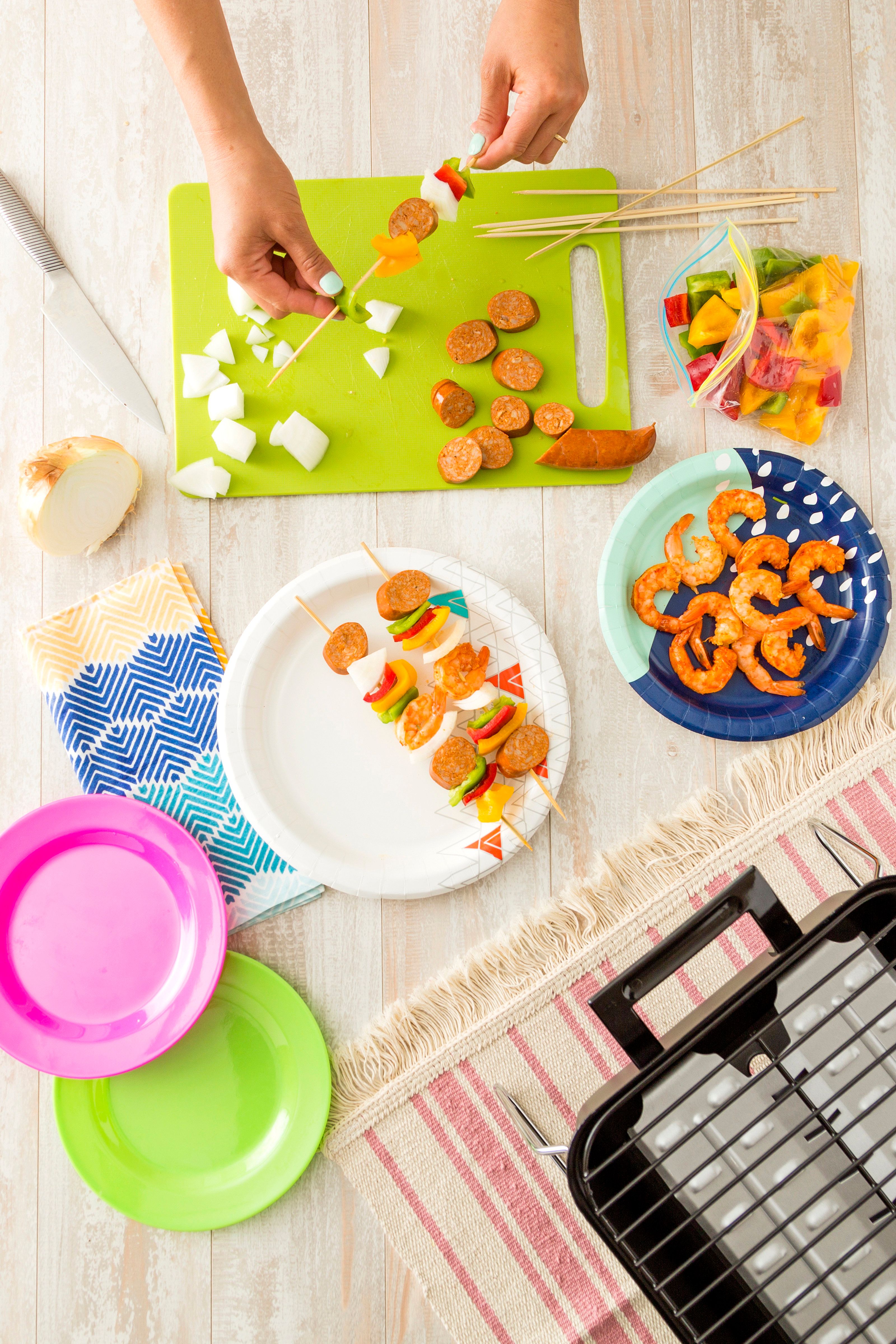
Food that's fun. "Online schools are not ending in the near future but you can keep kids from going stir crazy by getting them into the kitchen. Instead of swinging into another drive-through, teach your kids how to choose and prepare foods on their own that will keep them occupied and sharpen their minds. Plant a garden with kid-approved brain foods such as strawberries, tomatoes, sweet potatoes, carrots, spinach and broccoli."
- Encourage them to sample new things. "Have your kids research traditional foods and meals in different parts of the world. Then ask them to share what they've learned around the dinner table. It's a wonderful way to take your family on a culinary adventure while you're all stuck at home. For instance, my kids know that I only cook with palm oil produced in Malaysia because it is certified sustainable; it's made without harming wildlife or rain forests."
- Have enough measuring spoons and measuring cups so that each child can use their own. "That speeds up meal prep time. Kitchen shears are safer for kids to use than knives."

Here's one of Chef Viverito's favorites:
Curry Laksa
Serves 4-6
Ingredients:
Laksa Paste
- 3 dried red chiles, stems and seeds removed
- ¼ cup Sustainable Malaysian Palm oil
- 4 tsp Thai shrimp paste
- 1 2-inch piece galangal or substitute ginger, peeled, finely grated
- 3 garlic cloves, unpeeled
- 6 small shallots, chopped
- 3 lemongrass stalks, tough outer layers removed, finely grated
- 1 ½ TBSP coriander seeds
- 1 tsp ground tumeric
- 1 tsp ground cumin
- ¼ tsp ground white pepper
- 4ea Candlenuts or sub Macadamia nutsSoup
- ¼ c Sustainable Malaysian Palm oil
- 3 cups homemade chicken stock or low-sodium chicken broth
- 2 14-ounce cans coconut milk, divided
- 2 teaspoons palm sugar or light brown sugar
- 12 tofu puffs (optional)
1½ pounds peeled and deveined domestic White shrimp
8 ounces wide cooked egg noodles or substitute rice vermicelli
Kosher salt
4 large soft-boiled eggs, halved
2 medium Persian cucumbers, cut into julienne 1/8"
1/4c laksa leaves or mint, Chiffonade about 1/8" wide
2 c Bean sprouts
2-3 limes cut into wedges
sambal oelek (for serving)
How to Make:
Laksa Paste: Make the paste by soaking the chilies until soft in warm water for about 30 minutes. Drain them and get out as much excess liquid as possible and set aside.
In a blender, puree the remaining paste ingredients until semi smooth. Make sure the liquid goes into the bottom of the blender first to make the pureeing easier.
Chef Tip: Laksa paste can be made 1 week ahead or frozen in ice cube traysfor up to 2 months.
Soup: Heat oil in a large saucepan over medium-high. Cook laksa paste, stirring often, until the paste is slightly darkened and fragrant, about 2 minutes. Taste it, it should not taste raw. The oil will also start to separate from the paste fora visual clue.
Add the stock and simmer for 30 minutes. Add the coconut milk , and sugar. Cook, stirring, bring back to a simmer. Meanwhile, cook noodles according to package directions.
Add shrimp and tofu if using and cook through; season with salt. Divide soup and noodles among bowls. Top with eggs and cucumbers; serve with toppings.
Do Ahead: Curry base (without chicken) can be made 3 days ahead; cover and chill. Reheat over medium-low, adding water to thin as needed.
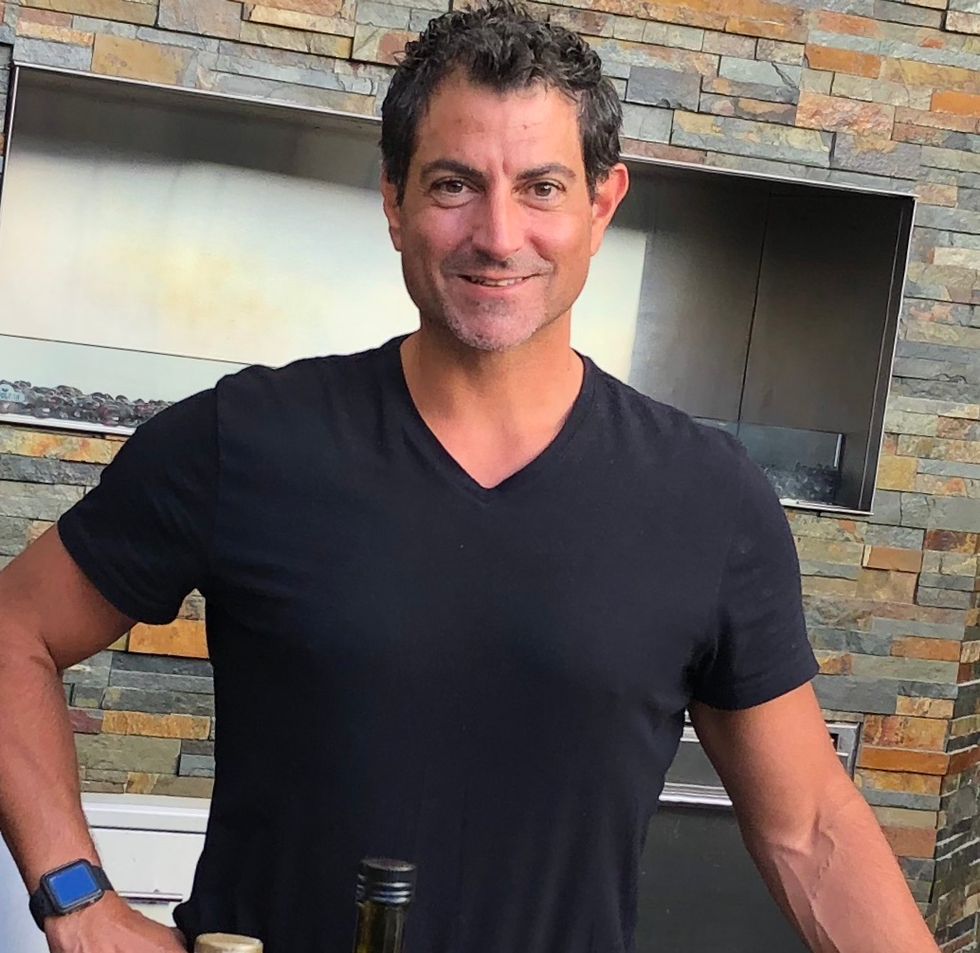
"Try eating just fresh foods for a couple weeks," says Viverito. "Pay attention to how eating different foods makes you feel … not just in the moment but also the next day. Then slowly introduce processed or sugary foods back into your diet and see how you feel. Once I cleaned up my diet and realized how great I felt, and how much clearer my thinking was, it became easier to kick my favorite junk foods to the curb, permanently!"
Check out Chef Viverito's healthy recipes at ChefGerard.com.
Follow us on Pinterest for more recipe ideas.













